I’ve been thinking a lot lately about the non-profit CEO hiring and on-boarding process because a former client of mine is starting to go down this path. So, I decided to get creative and use Lewis Carroll’s Alice’s Adventures in Wonderland and Through the Looking-Glass to talk about what many new non-profit CEO’s go through during and immediately after they’re hired.
For those of you who are wondering, I did pull from my personal experiences; however, I did embellish a little for entertainment purposes.
You might also be wondering what I ate or drank to come up with such a crazy idea? Well, I did play the role of the Dormouse in my high school’s production of Alice in Wonderland. And this awesome story has stuck with me ever since. 😉
Enjoy!
 Once upon a time, there was a young girl by the name of Alice.
Once upon a time, there was a young girl by the name of Alice.
Alice worked for a non-profit organization as a front line staff person. Her organization’s mission was inspirational. She worked with volunteers every day to operationalize that mission in a variety of ways. She helped train volunteers. She engaged donors to financially support the organization’s work. She planned a variety of events both programmatic and fundraising in nature. She sometimes even got to roll up her sleeves and get involved with program implementation.
Alice was successful, and the path in front of her was full of hope and opportunity.
One day while skipping down this path, Alice was approached by a White Rabbit. This nervous rabbit recognized Alice’s raw talents and suggested “she has what it takes” to provide leadership to another organization. In short order, Alice had reviewed a vacancy notice, done what she thought was appropriate due diligence, applied for the non-profit CEO position, and gone through a series of interviews with the rabbit and his search committee.
 Upon signing an offer sheet, Alice found herself tumbling down a rabbit hole. At the bottom of this hole, Alice was disoriented but determined. As she turned to the White Rabbit for advice and her next steps, she saw him running away and heard him saying over his shoulder, “Hello, Goodbye. I’m late, I’m late, I’m late.”
Upon signing an offer sheet, Alice found herself tumbling down a rabbit hole. At the bottom of this hole, Alice was disoriented but determined. As she turned to the White Rabbit for advice and her next steps, she saw him running away and heard him saying over his shoulder, “Hello, Goodbye. I’m late, I’m late, I’m late.”
As Alice tried calling after the rabbit, she was interrupted by a smiling Cheshire Cat. Startled and disoriented, she asked the cat what she should do first.
- What are the organization’s priorities?
- Is there a 90 day plan waiting for her?
- Can she please see the organization’s strategic plan?
Instead of helping, the cat simply smiled and remarked that she must be stark, raving mad. “Everyone here is mad. I’m mad. You’re mad. It’s only by chance n’ careful planning if you’re not!” In a blink of an eye, the cat fades away and wishes her luck on her new adventure.
In her first few days, with little to no direction, Alice was hungry for a challenge. She knew that her new organization needs her. After all, the rabbit and his search committee shared with her some of the organization’s challenges throughout the search process. They also assured her every step of the way that she was perfect for the job. This must be the truth because in the end, they did choose her over a number of other applicants.
Without any hesitation, Alice decided to dig in. She ate a project, and promptly grew ten times bigger. She drank another challenge and shrank smaller than she ever thought possible. As she looked around for evidence that this was indeed strange and bizarre, no one seemed to validate her feelings. There was no feedback, and there was definitely no help.
 One of the first characters Alice encounters, after the White Rabbit ran away, was a hookah smoking caterpillar. As it turned out, the caterpillar worked at the organization. Needless to say, this encounter didn’t go well. My friend Lewis Carroll does a better job recalling the conversation:
One of the first characters Alice encounters, after the White Rabbit ran away, was a hookah smoking caterpillar. As it turned out, the caterpillar worked at the organization. Needless to say, this encounter didn’t go well. My friend Lewis Carroll does a better job recalling the conversation:
‘Who are you?’ asked the Caterpillar.
This was not an encouraging opening for a conversation. Alice replied, rather shyly, ‘I — I hardly know, sir, just at present — at least I know who I WAS when I got up this morning, but I think I must have been changed several times since then.’
‘What do you mean by that?’ said the Caterpillar sternly. ‘Explain yourself!’
‘I can’t explain myself, I’m afraid, sir’ said Alice, ‘because I’m not myself, you see.’
‘I don’t see,’ said the Caterpillar.
‘I’m afraid I can’t put it more clearly,’ Alice replied very politely, ‘for I can’t understand it myself to begin with; and being so many different sizes in a day is very confusing.’
‘It isn’t,’ said the Caterpillar.
Shaken by this meeting, Alice decided to leave the office to explore the new community of which she was now an important member. Perhaps, other stakeholders — board members, volunteers, community leaders, collaborative partners, and donors — could help her get oriented and pointed in the right direction.
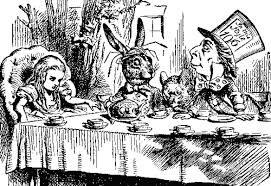 Without much effort, Alice came across a Tea Party with a wide range of characters. There was a Mad Hatter, March Hare and Dormouse. These three donors couldn’t seem to get along, nor did they seem to agree on why people supported the organization. When Alice weighed into the conversation by saying she had a good guess as to why the average donor supported the organization, the following weird discussion ensued:
Without much effort, Alice came across a Tea Party with a wide range of characters. There was a Mad Hatter, March Hare and Dormouse. These three donors couldn’t seem to get along, nor did they seem to agree on why people supported the organization. When Alice weighed into the conversation by saying she had a good guess as to why the average donor supported the organization, the following weird discussion ensued:
The March Hare: You mean you think you know the answer?
Alice: Yes.
The March Hare: Well, then, you should say what you mean.
Alice: Well, I do. At-at least, at least I mean what I say, that-that is the same thing.
Mad Hatter: It’s not the same thing at all. You might as well say “I eat what I see” is the same thing as “I see what I eat!”
The March Hare: You might as well say “I like what I get” is the same as “I get what I like!”
The Dormouse: [talking in his sleep, then suddenly awake] Aah! You-you, or you might as well say “I breathe when I sleep” is the same thing as “I sleep when I breathe.” [he quickly noded off again]
Mad Hatter: Well, it is the same thing with you.
Frustrated with the idea that her organization’s case for support was perceived differently by so many different donors, Alice decided to leave the tea party. Taking notice, the Mad Hatter yelled after her a few final words of advice, “[This] is a place. Like no place on Earth. A land full of wonder, mystery, and danger! Some say to survive it: You need to be as mad as a hatter.”
Alice pulls out a piece of paper she had taken a few notes on and started checking off stakeholders’ names. Perhaps, visiting with other non-profit CEOs in the community would help put her feet on the ground.
 At a gathering of her peers, Alice was approached by two identical looking individuals. She attempted to strike up a conversation about resource development, asking about which families are part of the community’s core philanthropic circle. She prattled on about the importance of individual giving and even tried to impress them with her knowledge about private sector fundraising trends. Instead of finding comrades-in-arms, Tweedledee and Tweedledum bark back at her and said, “Contrariwise, if it was so, it might be; and if it were so, it would be; but as it isn’t, it ain’t. That’s logic.”
At a gathering of her peers, Alice was approached by two identical looking individuals. She attempted to strike up a conversation about resource development, asking about which families are part of the community’s core philanthropic circle. She prattled on about the importance of individual giving and even tried to impress them with her knowledge about private sector fundraising trends. Instead of finding comrades-in-arms, Tweedledee and Tweedledum bark back at her and said, “Contrariwise, if it was so, it might be; and if it were so, it would be; but as it isn’t, it ain’t. That’s logic.”
Having lost her words, Alice paused but quickly recoiled when the gathering of her peers started staring at her and eerily began reciting the following poem:
‘Twas brillig, and the slithy toves
Did gyre and gimble in the wabe;
All mimsy were the borogoves,
And the mome raths outgrave.
“Beware the Jabberwock, my son!
The jaws that bite, the claws that catch!
Beware the Jujub bird, and shun
The frumious Bandersnatch!”
He took his vorpal sword in hand:
Long time the manxome foe he sought —
So rested he by the Tumtum gree,
And stood awhile in thought
And as in uffish thought he stood,
The Jabberwock, with eyes of flame,
Came whiffling through the tulgey wood,
And burbled as it came!
One, two! One, two! and through and through
The vorpal blade went snicker-snack!
He left it dead, and with its head
He went galumphing back.
“And hast thou slain the Jabberwock?
Come to my arms, my beamish boy!
O frabjous day! Callooh! Callay!”
He chortled in his joy.
‘Twas brillig, and the slithy toves
Did gyre and gimble in the wabe;
All mimsy were the borogoves,
And the mome raths outgrave.
Of course, it didn’t make sense, but in this place of nonsense, it made all the sense in the world. Her peers were trying to warn her about her organization’s board of directors. In fact, it wasn’t just Alice’s board they were chanting about. They were talking about all of their boards.
Without hesitation, Alice left the gathering of her peers and started running off in the direction of her board president — The Queen of Hearts — and the rest of the board, which was made up of a deck of cards.
 In her first encounter with The Queen of Hearts, Alice had lots of questions to ask.
In her first encounter with The Queen of Hearts, Alice had lots of questions to ask.
- Is there a plan (or at least a direction set by the board) that she could put her hands on?
- If not, then does the queen have any thoughts on where Alice should roll up her sleeves and start?
- Should she immediately turn her attention to building organizational capacity around resource develop and fundraising? Programming and operations? Board development and board governance?
Without hesitation or any thought, the queen snapped off a response. She explained that the organization was in perfect shape. There was no need to do any of that work, and doing so would simply be a diversion in her opinion. The queen proclaimed that Alice needs to only set her sights on running a multi-million capital campaign.
After giving this a few moments of consideration, Alice decided she must not have been clear in explaining some of what she had witnessed after her tumble down the rabbit hole. So, she started all over again only to be abruptly interrupted by the queen. She said, “I warn you, child… if I lose my temper, you lose your head! Understand?”
This is the start of Alice’s non-profit CEO tenure. While the adventure continued for many years and she had many successes (and learning opportunities), this is a good place to pause the story and ask . . .
- What was your experience with your organization’s CEO search process?
- What was different with your orientation?
- Was there as on-boarding plan in place? What did it look like?
- Did you receive a 90-day plan?
- Were there organizational scan worksheets to help guide you through your first three months?
Please use the comment box below to share your answers or any other experiences/thoughts you might have. We can all learn from each other.
Here’s to your health!
Erik Anderson
Founder & President, The Healthy Non-Profit LLC
www.thehealthynonprofit.com
erik@thehealthynonprofit.com
http://twitter.com/#!/eanderson847
http://www.facebook.com/eanderson847
http://www.linkedin.com/in/erikanderson847

 I was chatting the other day with a newly elected board president. He was lamenting the fact that his fellow board volunteers don’t respond to his emails very well, and he wanted a little advice on how to change this dynamic. If this is a problem for your organization, then please keep reading.
I was chatting the other day with a newly elected board president. He was lamenting the fact that his fellow board volunteers don’t respond to his emails very well, and he wanted a little advice on how to change this dynamic. If this is a problem for your organization, then please keep reading.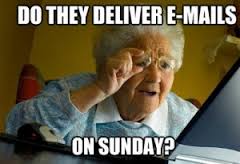 Within this broad category, there are many considerations.
Within this broad category, there are many considerations.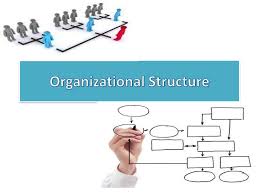 Believe it or not, how you are structured can greatly effect how people decide to use email as it relates to your organization.
Believe it or not, how you are structured can greatly effect how people decide to use email as it relates to your organization.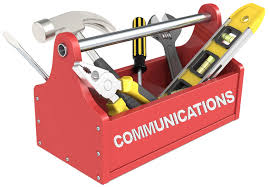 Email is simply a communication tool. Here is an inventory of tools/processes/approaches that you may find in your communications toolbox:
Email is simply a communication tool. Here is an inventory of tools/processes/approaches that you may find in your communications toolbox: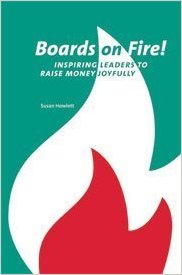
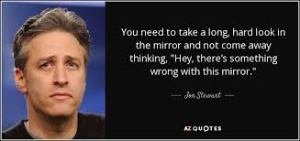 If your board is resistant to the idea of fundraising, I encourage you to first take a good hard look in the mirror and ask yourself the following questions:
If your board is resistant to the idea of fundraising, I encourage you to first take a good hard look in the mirror and ask yourself the following questions: Let’s face it. Our government is broke. We The People have accumulated almost $20 trillion in debt. As government leaders wrestle with this issue, the non-profit sector continues to rally from time-to-time insisting every other sacred cow in the tax code should be scrutinized except for our own. Putting aside the fairness and hypocrisy questions, I’m left wondering: 1) why do we cling to this entitlement so strongly, 2) what is the real effect of this tax policy on our sector and 3) what would really happen if lost this tax status?
Let’s face it. Our government is broke. We The People have accumulated almost $20 trillion in debt. As government leaders wrestle with this issue, the non-profit sector continues to rally from time-to-time insisting every other sacred cow in the tax code should be scrutinized except for our own. Putting aside the fairness and hypocrisy questions, I’m left wondering: 1) why do we cling to this entitlement so strongly, 2) what is the real effect of this tax policy on our sector and 3) what would really happen if lost this tax status? I don’t want to muddle this point. So, let me be clear. I’ve spoke with many donors (both large and small) who mention the word “tax deduction.” It is usually in reference to needing documentation for their accountant. Only one donor actually pushed the pencil and said he needed to make a donation of a certain size to
I don’t want to muddle this point. So, let me be clear. I’ve spoke with many donors (both large and small) who mention the word “tax deduction.” It is usually in reference to needing documentation for their accountant. Only one donor actually pushed the pencil and said he needed to make a donation of a certain size to  I am not a fortune teller. I cannot predict the impact of such a policy change. However, I can confidently say a few obvious things:
I am not a fortune teller. I cannot predict the impact of such a policy change. However, I can confidently say a few obvious things: As a young non-profit professional, who was just learning his craft, I was first introduced to the idea of a “house party” event format as a fundraising technique. The idea was simple. Ask someone to host a small party in their home. Work with them to identify a guest list of potential donors from their list of friends and colleagues. Make a group ask during the get together and collect pledge cards. My former employer used to call these “leadership circle” events.
As a young non-profit professional, who was just learning his craft, I was first introduced to the idea of a “house party” event format as a fundraising technique. The idea was simple. Ask someone to host a small party in their home. Work with them to identify a guest list of potential donors from their list of friends and colleagues. Make a group ask during the get together and collect pledge cards. My former employer used to call these “leadership circle” events.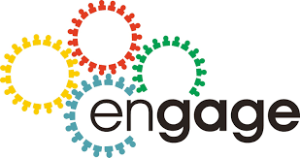 Last week’s experience helped me see house parties in a whole new light. No longer was this strategy simply a tool in a non-profit person’s resource development toolbox. The more I thought about it, the opportunities seemed to be endless. Here are just a few of my thoughts:
Last week’s experience helped me see house parties in a whole new light. No longer was this strategy simply a tool in a non-profit person’s resource development toolbox. The more I thought about it, the opportunities seemed to be endless. Here are just a few of my thoughts: A few years ago, I wrote a post titled “
A few years ago, I wrote a post titled “ Oh, well let me count the reasons . . .
Oh, well let me count the reasons . . . I have no idea why this is so scary for so many non-profit staff and board volunteers. It doesn’t have to be a confrontation. Here are a few talking points:
I have no idea why this is so scary for so many non-profit staff and board volunteers. It doesn’t have to be a confrontation. Here are a few talking points: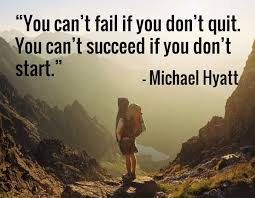 If the reasons given by your board volunteer aren’t things beyond anyone’s control (e.g. family member illness, work-related challenges, etc) and they simply don’t feel comfortable with solicitation, then ask them to get heavily involved in cultivation (e.g. engaging new prospective supporters) and stewardship (e.g. showing existing donors gratitude and return on investment) activities. (Note: don’t simply let them focus on other non-fundraising activities like programming or marketing)
If the reasons given by your board volunteer aren’t things beyond anyone’s control (e.g. family member illness, work-related challenges, etc) and they simply don’t feel comfortable with solicitation, then ask them to get heavily involved in cultivation (e.g. engaging new prospective supporters) and stewardship (e.g. showing existing donors gratitude and return on investment) activities. (Note: don’t simply let them focus on other non-fundraising activities like programming or marketing) Sometimes we can’t fix the problem. Board members are people, too. Their parents get sick. Their marriages falter. They end up with a new boss who demands more from them.
Sometimes we can’t fix the problem. Board members are people, too. Their parents get sick. Their marriages falter. They end up with a new boss who demands more from them. Have you ever stopped whatever you doing, took a deep breath, and observed the world around you? (And I mean really take a deep look.) I did this just the other day, and what I saw kind of surprised me. Everywhere I looked I saw
Have you ever stopped whatever you doing, took a deep breath, and observed the world around you? (And I mean really take a deep look.) I did this just the other day, and what I saw kind of surprised me. Everywhere I looked I saw 
 If I’ve seen it once, I’ve seen it over and over again. An organization puts the right people around the table and engages everyone in developing the right written plan for their fundraising campaign or event. They recruit the right people in the right way to work pledge cards or solicit event participants or secure sponsorships. They even go about assigning prospects/donors to volunteer solicitors very effectively. And then it happens . . . solicitation materials are distributed and everything comes to a screeching halt.
If I’ve seen it once, I’ve seen it over and over again. An organization puts the right people around the table and engages everyone in developing the right written plan for their fundraising campaign or event. They recruit the right people in the right way to work pledge cards or solicit event participants or secure sponsorships. They even go about assigning prospects/donors to volunteer solicitors very effectively. And then it happens . . . solicitation materials are distributed and everything comes to a screeching halt. A report meeting is simply a face-to-face meeting of volunteer solicitors, who come together to report their progress to each other.
A report meeting is simply a face-to-face meeting of volunteer solicitors, who come together to report their progress to each other. If you’ve recruited the right volunteers with the right skill sets and experiences to work on your fundraising campaign, then these people are likely very busy.
If you’ve recruited the right volunteers with the right skill sets and experiences to work on your fundraising campaign, then these people are likely very busy. We need to keep in mind that no one likes fundraising just for the sake of getting their friends to give them money. The reason volunteers sign-up to do what many people consider difficult and intimidating is because they are truly bought into your mission.
We need to keep in mind that no one likes fundraising just for the sake of getting their friends to give them money. The reason volunteers sign-up to do what many people consider difficult and intimidating is because they are truly bought into your mission.

 Last week, British voters stunned the world in a number of different ways. First, they voted in a non-binding referendum to invoke
Last week, British voters stunned the world in a number of different ways. First, they voted in a non-binding referendum to invoke  Communications experts refer to this experience as “
Communications experts refer to this experience as “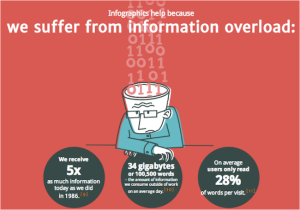 So, if you are still with me, you might be wondering what can be done to improve the likelihood that donors, board volunteers and staff are hearing (and understanding) what your organization needs them to know. While I am not a communications expert, here are a few thoughts:
So, if you are still with me, you might be wondering what can be done to improve the likelihood that donors, board volunteers and staff are hearing (and understanding) what your organization needs them to know. While I am not a communications expert, here are a few thoughts: